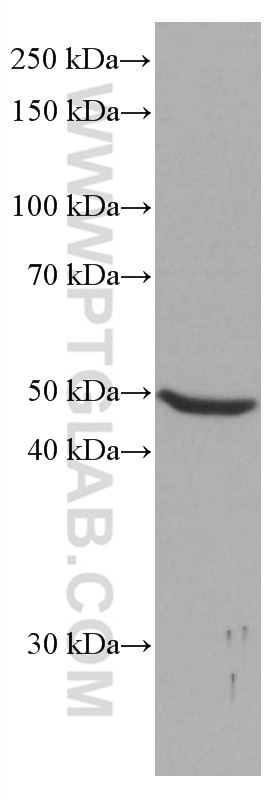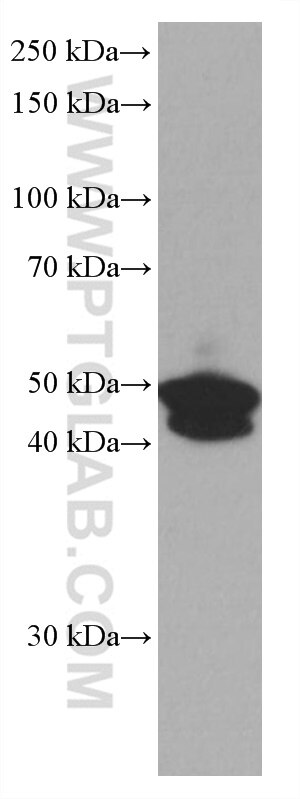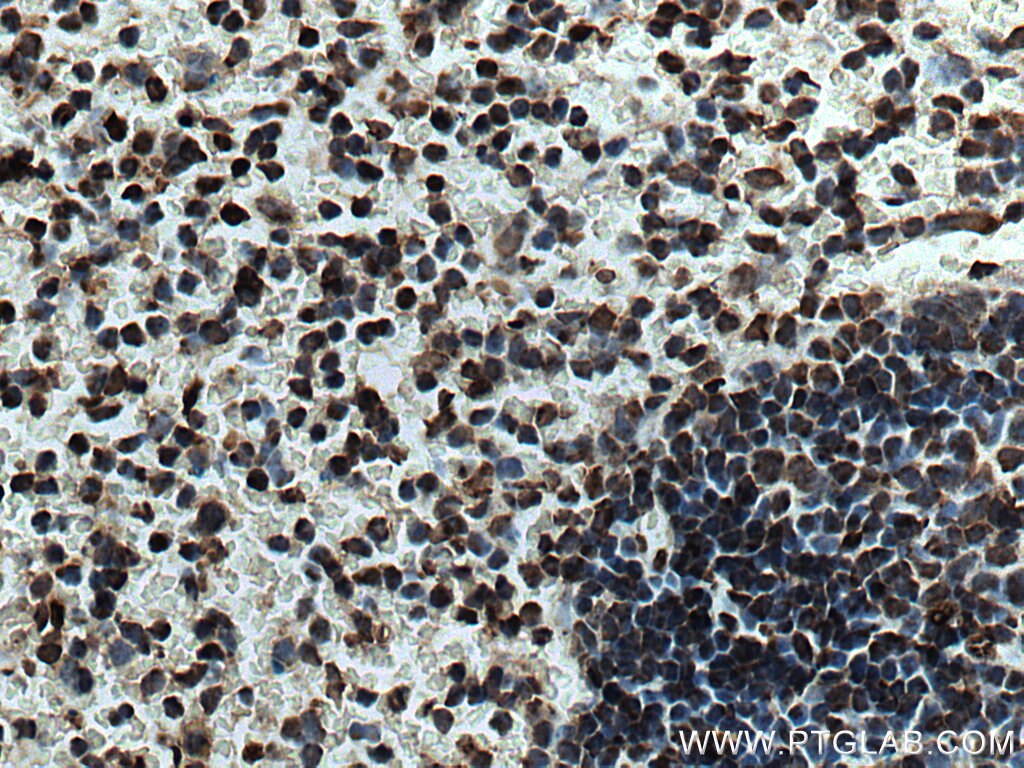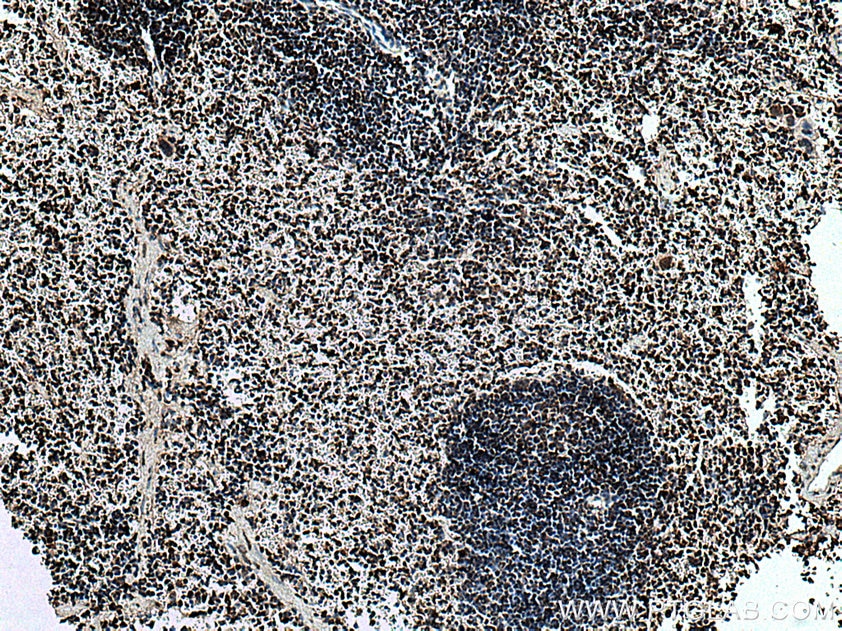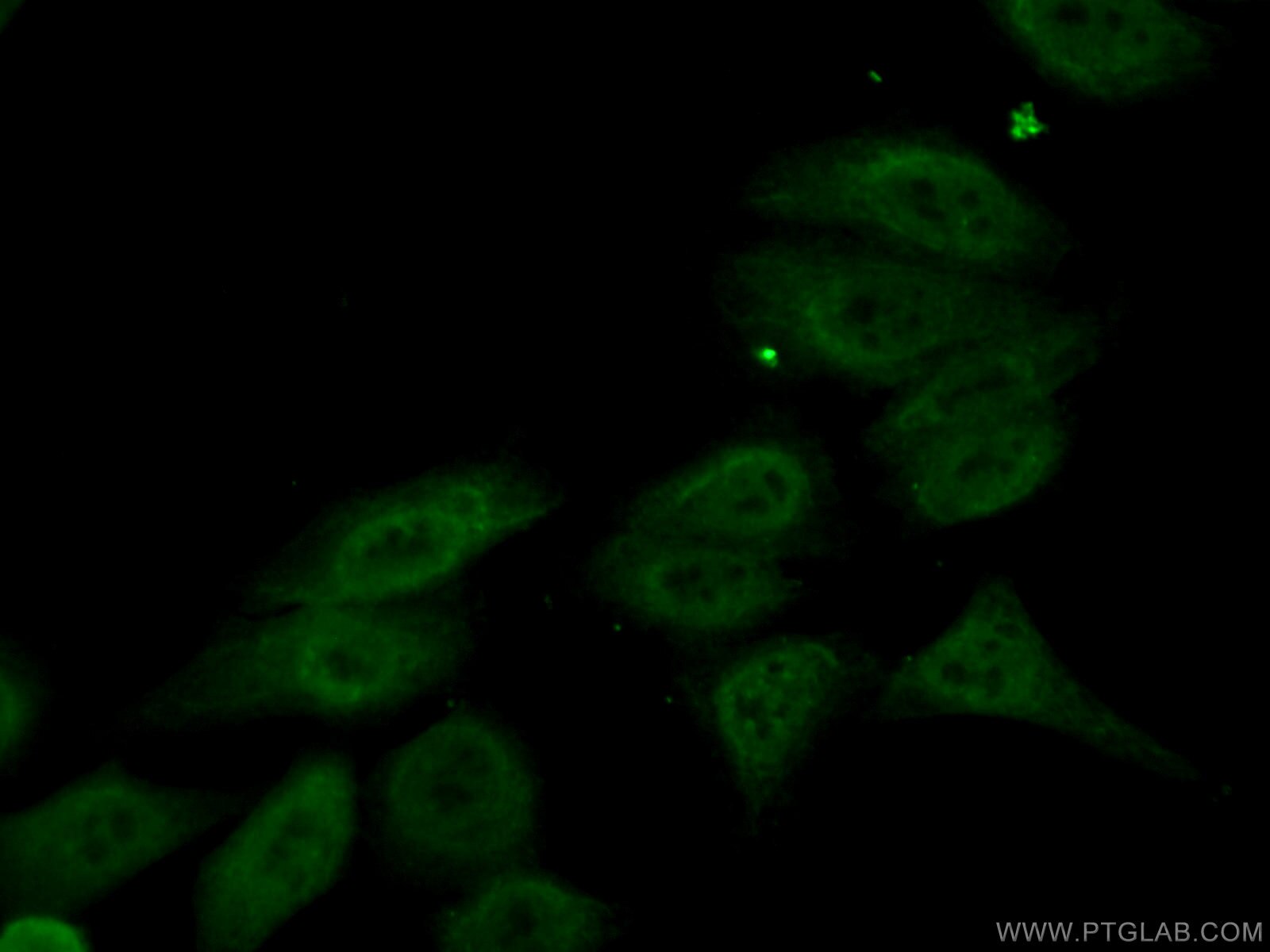Validation Data Gallery
Tested Applications
Recommended dilution
| Application | Dilution |
|---|---|
| It is recommended that this reagent should be titrated in each testing system to obtain optimal results. | |
Product Information
67012-1-PBS targets NEIL1 in WB, IHC, IF/ICC, Indirect ELISA applications and shows reactivity with Human, mouse samples.
| Tested Reactivity | Human, mouse |
| Host / Isotype | Mouse / IgG2a |
| Class | Monoclonal |
| Type | Antibody |
| Immunogen | NEIL1 fusion protein Ag8307 相同性解析による交差性が予測される生物種 |
| Full Name | nei endonuclease VIII-like 1 (E. coli) |
| Calculated molecular weight | 390 aa, 44 kDa |
| Observed molecular weight | 44 kDa |
| GenBank accession number | BC010876 |
| Gene Symbol | NEIL1 |
| Gene ID (NCBI) | 79661 |
| RRID | AB_2882329 |
| Conjugate | Unconjugated |
| Form | Liquid |
| Purification Method | Protein A purification |
| UNIPROT ID | Q96FI4 |
| Storage Buffer | PBS only , pH 7.3 |
| Storage Conditions | Store at -80°C. |
Background Information
NEIL1, also named as NEH1 and FPG1, belongs to the FPG family. It is involved in base excision repair of DNA damaged by oxidation or by mutagenic agents. NEIL1 acts as DNA glycosylase that recognizes and removes damaged bases. It has a preference for oxidized pyrimidines, such as thymine glycol, formamidopyrimidine (Fapy) and 5-hydroxyuracil. NEIL1 has marginal activity towards 8-oxoguanine. It has AP (apurinic/apyrimidinic) lyase activity and introduces nicks in the DNA strand. It cleaves the DNA backbone by beta-delta elimination to generate a single-strand break at the site of the removed base with both 3'- and 5'-phosphates. NEIL1 has DNA glycosylase/lyase activity towards mismatched uracil and thymine, in particular in U:C and T:C mismatches. The increased BER activity of NEILs may represent an adaptive response against ROS-induced DNA damage resulting from aniline exposure, and could be an important mechanism for the removal of oxidative DNA lesions. (PMID:21145906)
